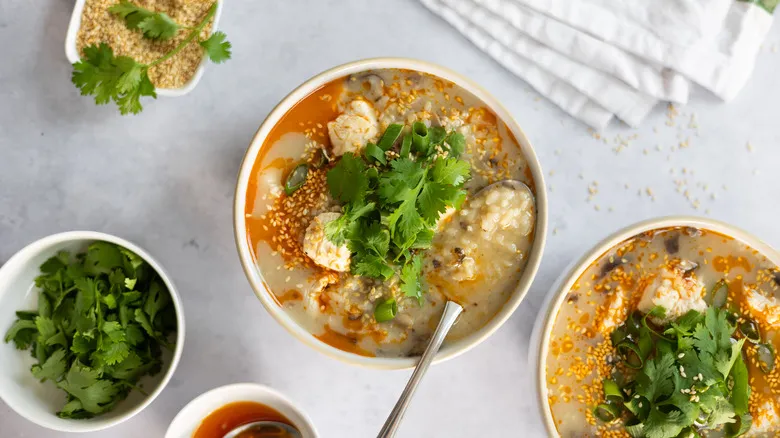Gather the ingredients for the comforting ginger chicken jook

To prepare this soothing ginger chicken jook, you will require: sesame oil, vegetable oil, shiitake mushrooms, garlic, ginger, chicken stock, soy sauce, short-grain rice, chicken breast, chili oil, scallions, coriander leaves, and sesame seeds.
Shiitake mushrooms, celebrated for their rich earthiness and high nutrient content, lend the jook a meaty texture and umami richness, enhancing its savory character. The classic blend of minced garlic and finely grated ginger infuses the rice with warmth and an earthy aroma. However, the essence of this dish lies in the chicken stock, a flavorful base that combines with soy sauce to create a broth that anchors the recipe, delivering a deep, layered umami flavor.
The short-grain rice serves as the foundation of this dish, releasing its starch to create the creamy, velvety texture that defines congee as it simmers gently with the other ingredients. The sliced chicken contributes heartiness and absorbs the unique flavors of the broth, adding a satisfying protein element to this nourishing meal. A hint of chili oil awakens the palate, while scallions, coriander leaves, and toasted sesame seeds provide brightness and texture. Each ingredient in this jook plays a vital role in crafting a delightful and nourishing dining experience.
Step 1: Place the pot over heat

Heat a large pot over medium-high heat and pour in the sesame oil and vegetable oil.
Step 2: Cook the mushrooms

Incorporate the shiitake mushrooms and sauté for 5 minutes or until they turn golden brown, stirring occasionally.
Step 3: Cook the garlic and ginger
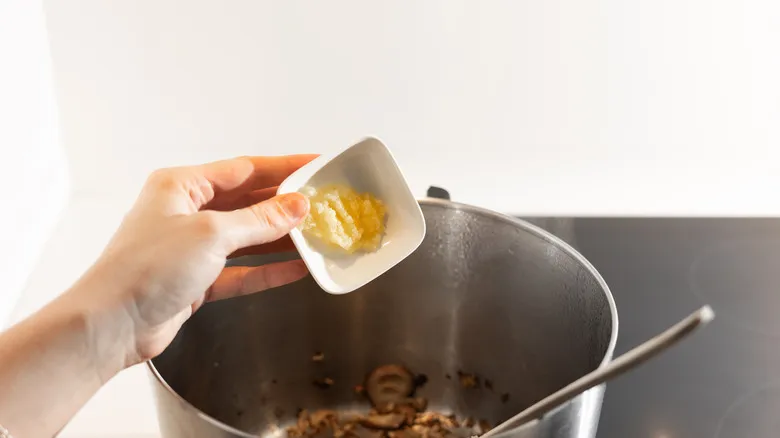
Incorporate the garlic and ginger, cooking for 1 minute while stirring, or until aromatic.
Step 4: Add the chicken stock and soy sauce

Add the chicken stock and soy sauce, then bring to a boil before reducing the heat to a simmer.
Step 5: Cook the rice

Incorporate the rice, place the lid on top, and let it simmer for 30 minutes or until it reaches a creamy consistency and the rice is soft. Stir from time to time.
Step 6: Poach the chicken

Introduce the chicken and let it simmer for 2 minutes or until fully cooked.
Step 7: Spoon into bowls

Remove the pot from the heat and ladle the chicken congee into the serving bowls.
Step 8: Garnish

Top the congee with chili oil, green onions, cilantro, and toasted sesame seeds.
Step 9: Serve the jook

Dish out the chicken congee and savor it.
Where does jook come from?

Jook, a cherished dish known by various names such as congee or rice porridge, has its roots in China, where it has been a staple for thousands of years due to its nourishing properties and its role in traditional Chinese medicine. This simple yet adaptable dish has transformed over time, embracing the unique flavors and ingredients of different cultures across Asia, including Japan, Korea, and Thailand. More than just a meal, jook carries profound cultural significance — it represents comfort, healing, and community connection. Traditionally enjoyed during illness or as a warm, hearty breakfast, it embodies care and nourishment, often lovingly prepared by family members to promote health and recovery.
With a basic foundation of rice and water, jook acts as a versatile canvas, allowing for the addition of various ingredients to meet individual health needs. Its importance goes beyond the kitchen; it reflects the holistic principles of traditional Chinese medicine, where food is seen as a powerful means of promoting wellness. Throughout Asian cultures, jook transcends culinary limits, becoming an integral part of cultural rituals and celebrations. The process of making and sharing jook symbolizes unity and togetherness, fostering a sense of belonging within communities. Additionally, its flexibility allows for numerous variations — whether savory or sweet, vegetarian or meat-based — showcasing the diverse tastes and preferences found in different regions.
Can I use a different variety of rice for jook or congee?

Although various types of rice can often be swapped in many recipes, short-grain rice is the best option for this delightful, comforting dish. It is the ideal choice for achieving the smooth texture and creamy consistency that characterizes jook. Its unique starchiness, when gently simmered in broth, releases a soothing creaminess, turning the dish into a comforting, silky porridge. The small, plump grains of short-grain rice easily absorb liquid, gradually breaking down to form a rich base — a signature feature of traditional jook.
If you find it challenging to locate standard short-grain rice, Arborio rice, famous for its role in Italian risotto, serves as a suitable alternative due to its similar high starch content and ability to create a creamy texture when cooked slowly. While it comes from a different culinary tradition and has distinct uses, Arborio's starch profile makes it the closest substitute for short-grain rice in jook, even if the flavor is slightly different. Using Arborio rice, while not traditional, provides a practical option for those aiming to achieve a creamy consistency akin to that of short-grain rice in this cherished dish.
Is there a difference between congee and jook?

While both congee and jook are types of rice porridge, they differ in terms of name, origin, and subtle variations in their preparation and toppings. Congee serves as a broad term for various rice porridges found across Asia, whereas jook is specifically linked to the southern Chinese region of Guangdong.
The word "congee" has its roots in the Tamil language, having been introduced to English through Portuguese explorers and British colonists. In Tamil, "kanji" means "boilings," referring to both the porridge and the water used to cook the rice. This term evolved into "canje" in Portuguese before the British adopted "congee." On the other hand, "jook," which can also be spelled "juk" or "chuk," has a more straightforward origin: it is an English translation of a Cantonese term that directly means "rice porridge."
Since jook is specific to Southern China, the seasonings and toppings typically reflect the culinary traditions of that region. This characteristic is what primarily distinguishes jook from the various forms of congee found in other parts of Asia. Jook is often served with ingredients like bok choy, scallions, ginger, sesame oil, boiled eggs, and soy sauce, allowing each diner to customize their dish to their liking.
Should you rinse the rice before making jook?

Most jook recipes suggest washing the rice before making the congee. This process typically involves mixing the rice with water in a bowl and gently stirring it with your hands or running it through your fingers to eliminate excess starch and dirt. Alternatively, you can place the rice in a strainer and rinse it under cold water until the water runs clearer. It may take several rinses to prepare the rice for cooking, but be cautious not to rinse it too many times, as some starch is essential for thickening the jook.
While both congee and jook are intended to be thick and comforting porridges, an overly sticky or heavy texture is not ideal. By removing some of the excess starch, which contributes to gummy rice, you can achieve a lighter, fluffier porridge that is silky and creamy instead of slimy or gelatinous. Some brands offer pre-washed or pre-rinsed rice, and if you can find that, you can skip the rinsing step altogether.
How should I store leftover chicken jook?

Like many dishes, jook is at its best when freshly made. However, if you have leftovers, you can store them in an airtight container in the refrigerator for up to five days. It can also be frozen for a month in an airtight container or freezer bag. For quicker thawing and reheating, consider freezing it in individual portions using smaller freezer bags laid flat. When you're ready to use frozen jook, thaw it in the refrigerator before reheating. You can warm it up on the stove or in the microwave, and if it has thickened too much, just add some water or broth to achieve your preferred consistency.
If you notice that the jook has lost some flavor after freezing and reheating, you can enhance it with various seasonings and toppings. Consider adding crushed peanuts, dried pork flakes, or a bit more ginger or soy sauce for extra flavor.
Recommended
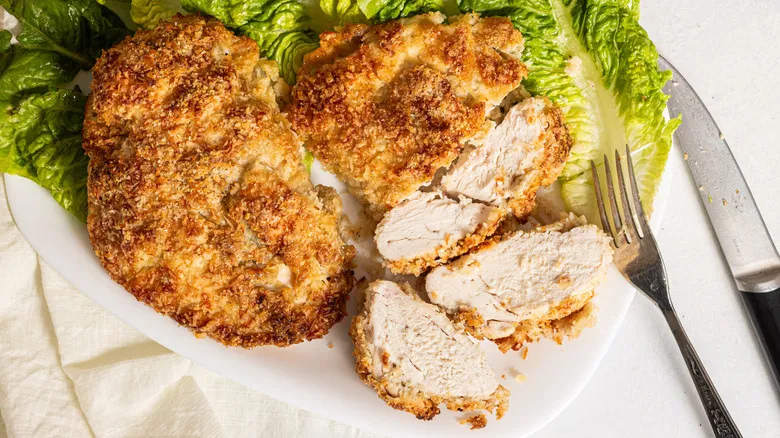
Crispy Coconut Baked Chicken Breasts Recipe
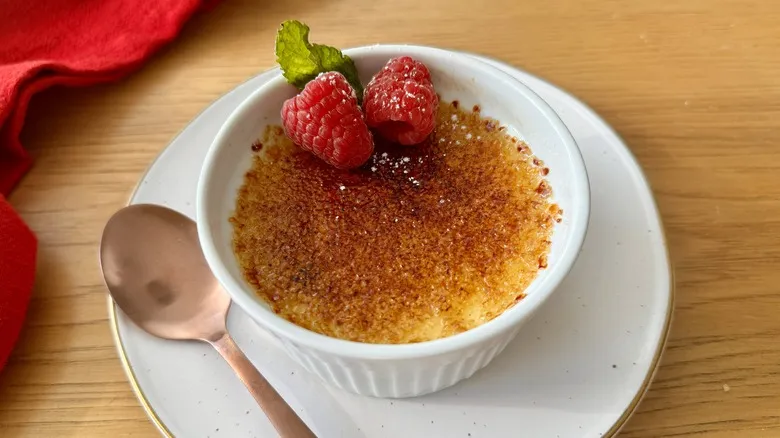
Classic Foolproof Crème Brûlée Recipe
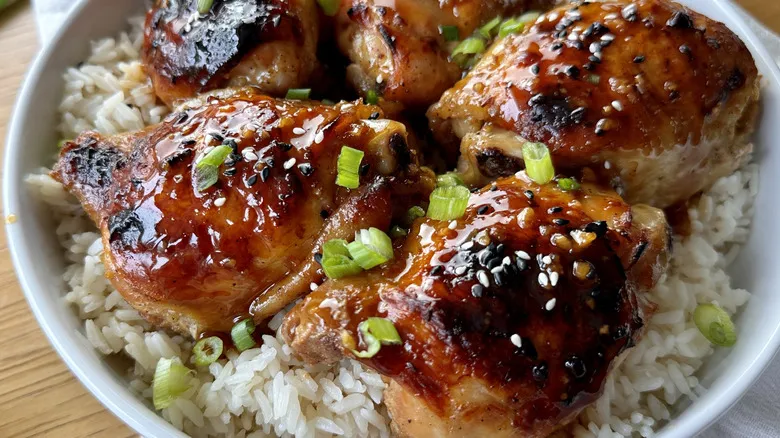
Honey Soy Marinated Baked Chicken Thighs Recipe
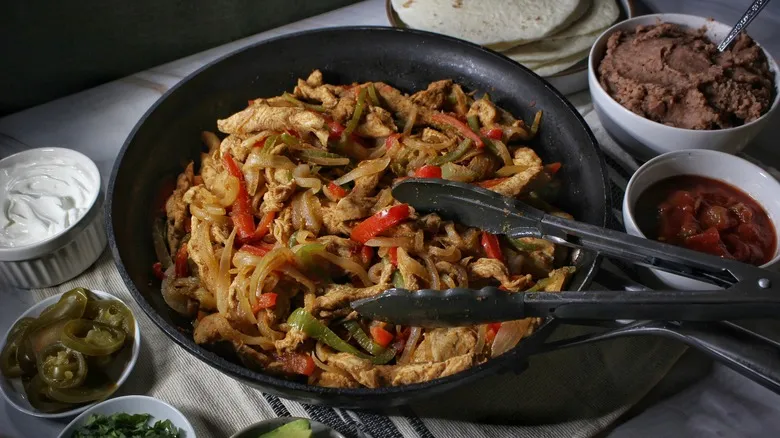
Simple One-Pan Chicken Fajitas Recipe
Next up

